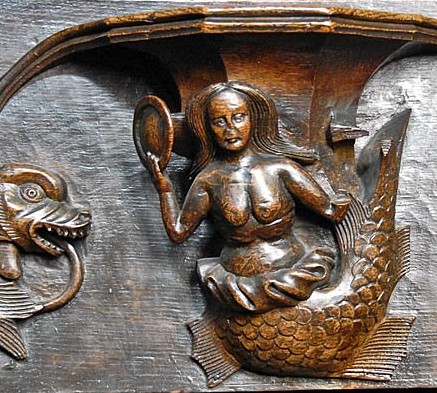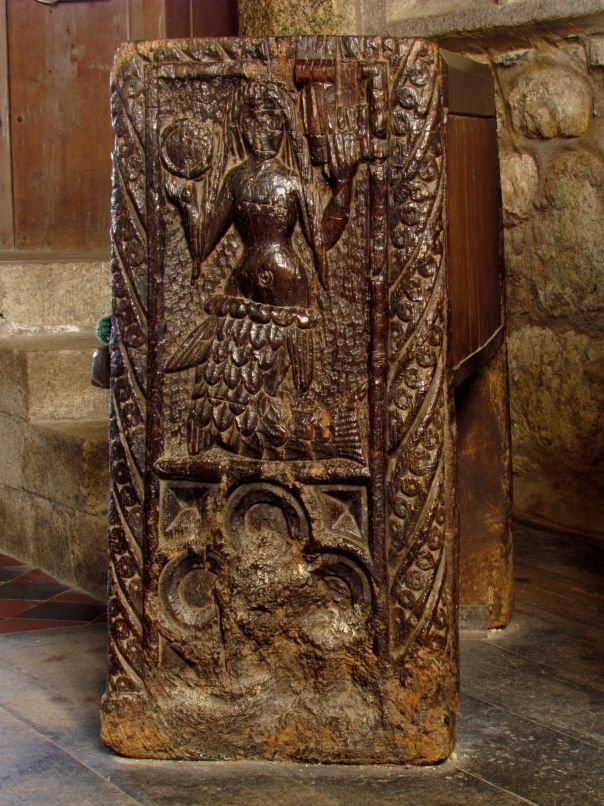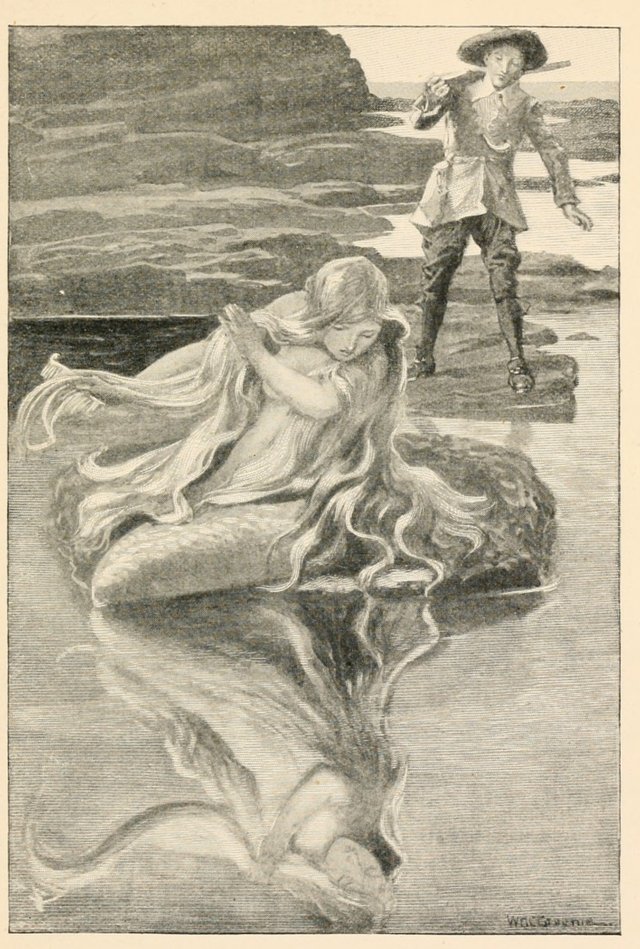Mermaids!

The idea that the sea is home to half-human, half-animal creatures is widespread, with examples from the ancient world and from nineteenth-century folklore collections. All the examples are not necessarily link historically: this seems to be a common idea held by many people independently.
In Britain and Ireland, these creatures took one of two forms. In Scotland and parts of Ireland, the sea folk appeared as seals who could shed their skins to take the form of a human. Elsewhere, the creatures were human from above the waist and fish below. Some places describe the merfolk as having a magical cap (in Gaelic, cohuleen druith) that could be removed so they could take fully human form. This allowed for a shared legend - whether dealing with a fish or a seal creature - in which a man found a beautiful sea creature in its human, female form. He steals the seal skin - or magic cap - and forces the poor thing to remain in its human form. He takes her as his wife, and they live happily enough and she has several children. At one point, the eldest child asks his mother why his father keeps a seal skin (or magic cap) in the rafters, at which the woman is compelled to retrieve the object and resume her life in the open water.
This story can only occur among people who believed in the seal folk or in the magic cap. Cornish legends of mermaids did not involve a magic cap, and so transformations were not as likely to occur in the southwest of Britain. Cornwall's famous 'Mermaid of Zennor' does describe a mermaid who took human form, but the story does not tells us how she accomplished this remarkable feat. A carved bench end in the church at Zennor depicts a mermaid and is often associated with the legend, but it is unclear whether the carving attracted the legend or - less likely - was inspired by it.

The Zennor story includes a final motif: the beautiful women lured one of the parishioners to join her in her watery abode, and some time later, the captain of a ship reported that a mermaid had risen above the waves to ask that he move his anchor as the heavy object was resting on the door to her home and she could not reach her children. The captain complied, but when he told his story to the people of Zennor, they believed this served as proof that the beautiful, mysterious women who had once attended their church was in fact a mermaid, now raising children together with her mortal husband.
.jpg)
Mermaids were often thought to cherish their comb and mirror, which the Church taught were expressions of vanity, something to be scorned. It is unclear why these two objects became associated with the mermaid. The comb and mirror can also be seen as expressions of death - the comb as something old women used when tending to a corpse before burial, and the mirror as a means to peer into another world. Regardless of whether it is possible to read into these objects this sort of primal meaning, obtaining the mermaid's comb came to be regarded as a way to win an important magical treasure. Cornish families with a reputation for healing often claimed to possess a mermaid's comb, which served as proof that someone in a previous generation had saved a mermaid stranded in a tidal pool, and that she had rewarded her rescuer with the comb and the ability to heal disease.

Congratulations @itsallfolklore! You have completed some achievement on Steemit and have been rewarded with new badge(s) :
Click on any badge to view your own Board of Honor on SteemitBoard.
For more information about SteemitBoard, click here
If you no longer want to receive notifications, reply to this comment with the word
STOPI want to meet a real mermaid.
I suspect you are not unique in that desire. According to the stories, however, it doesn't usually end well.